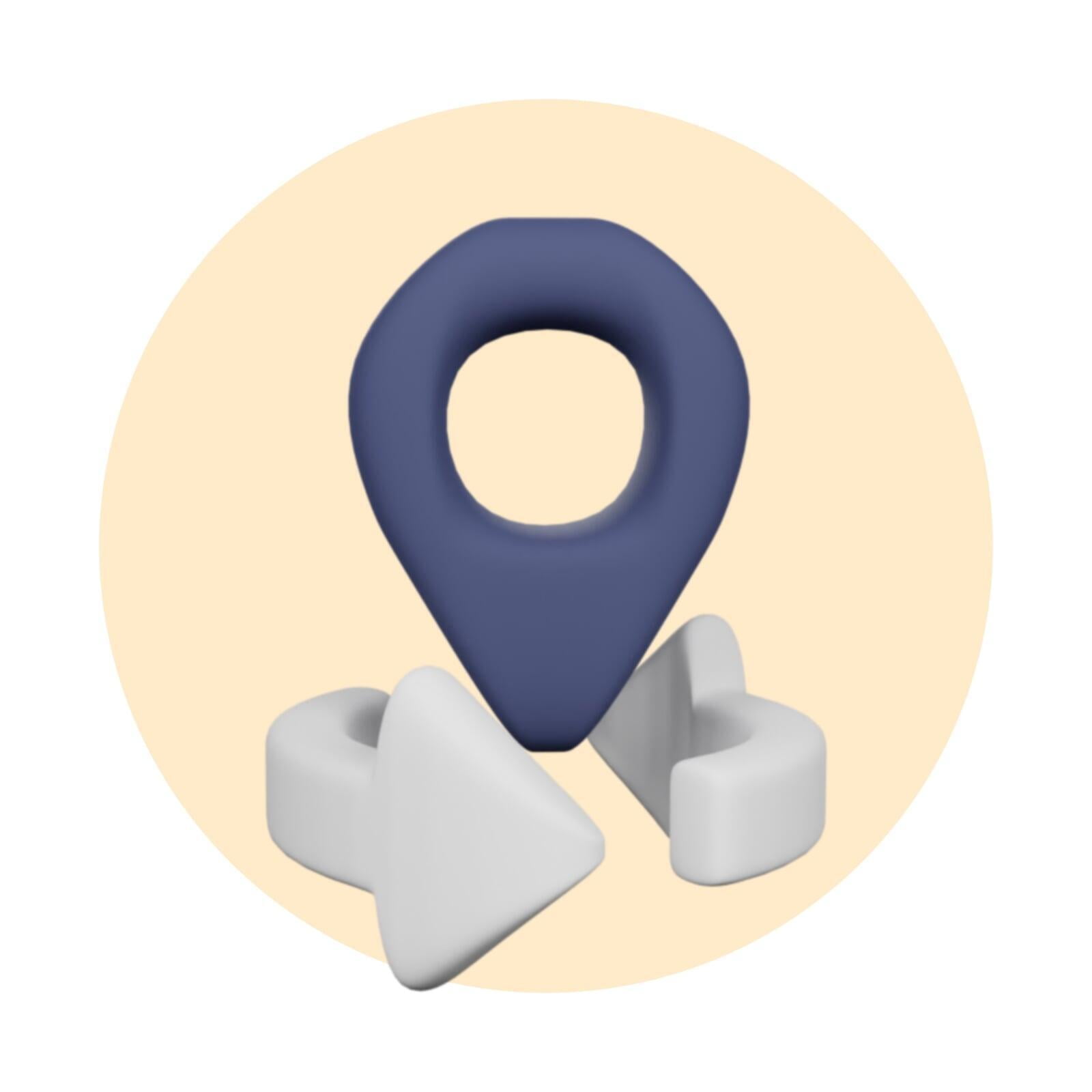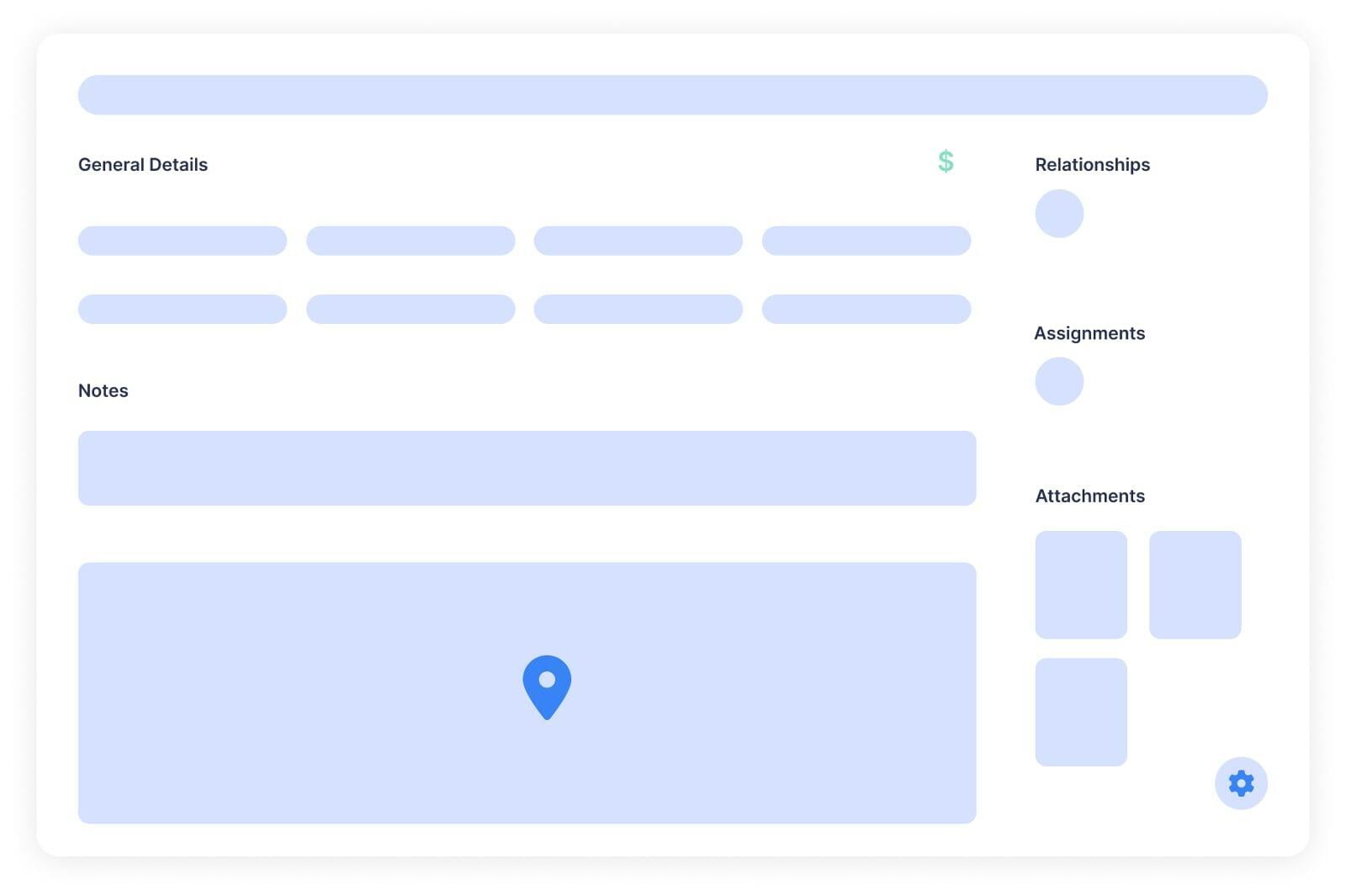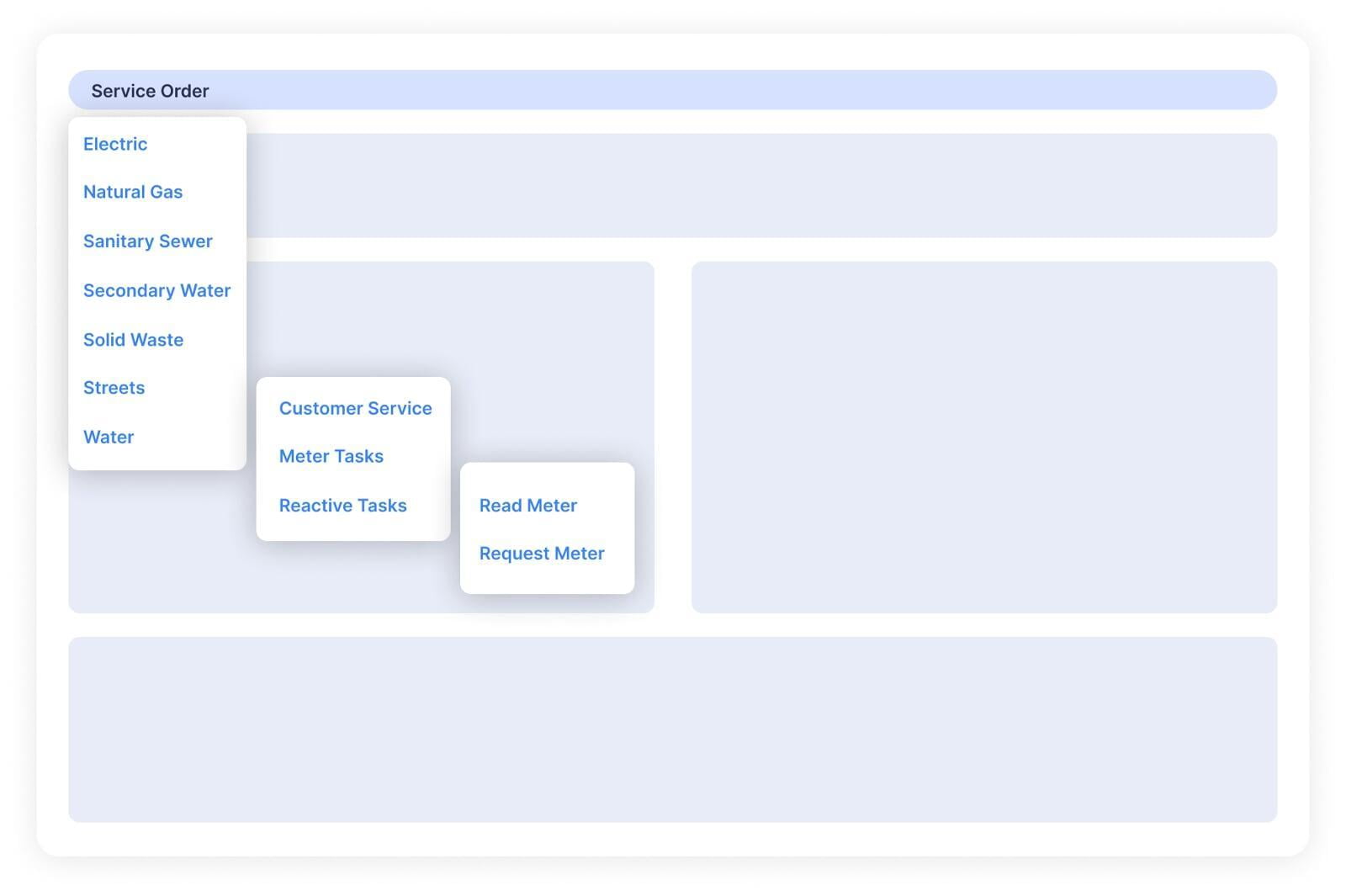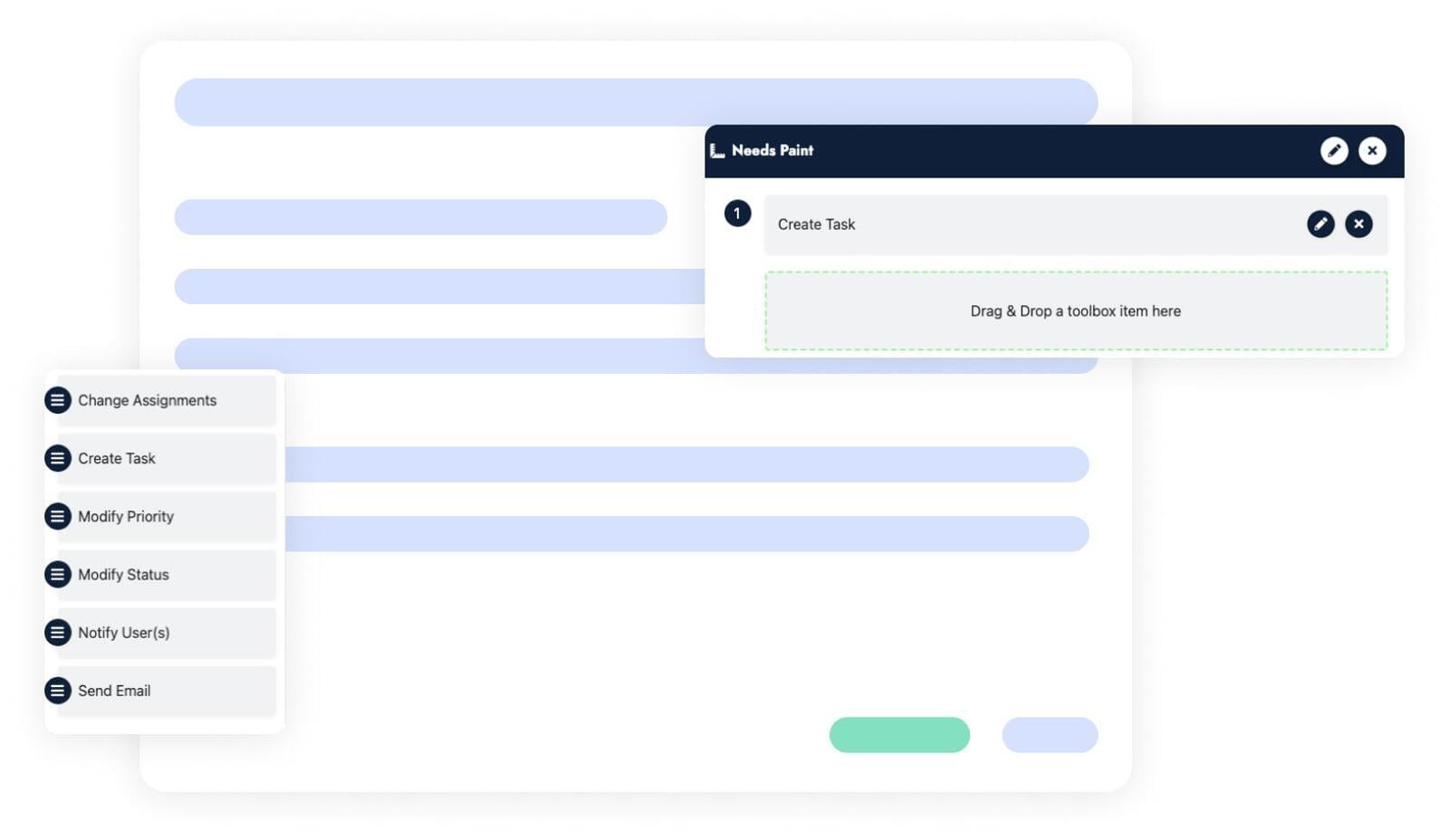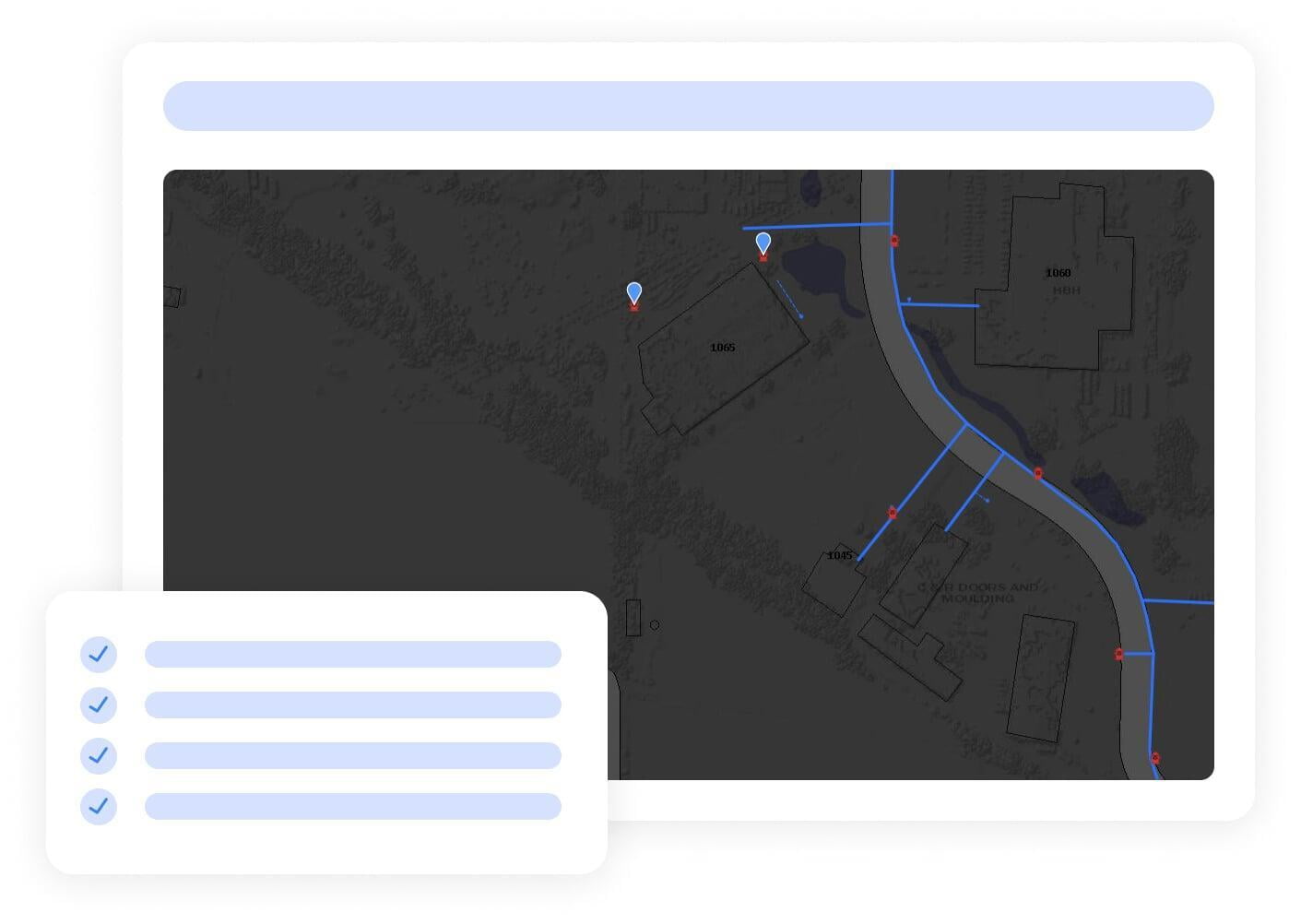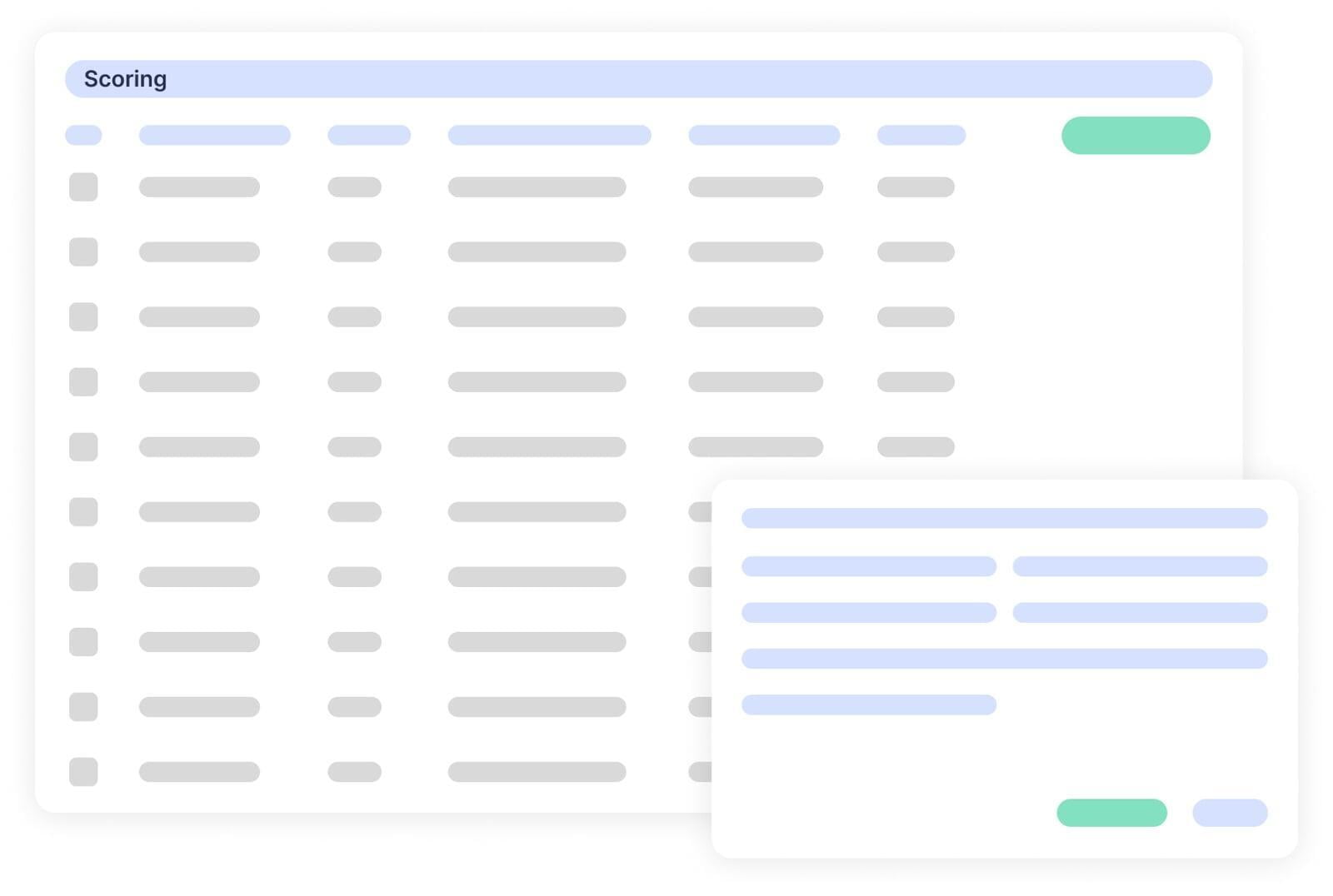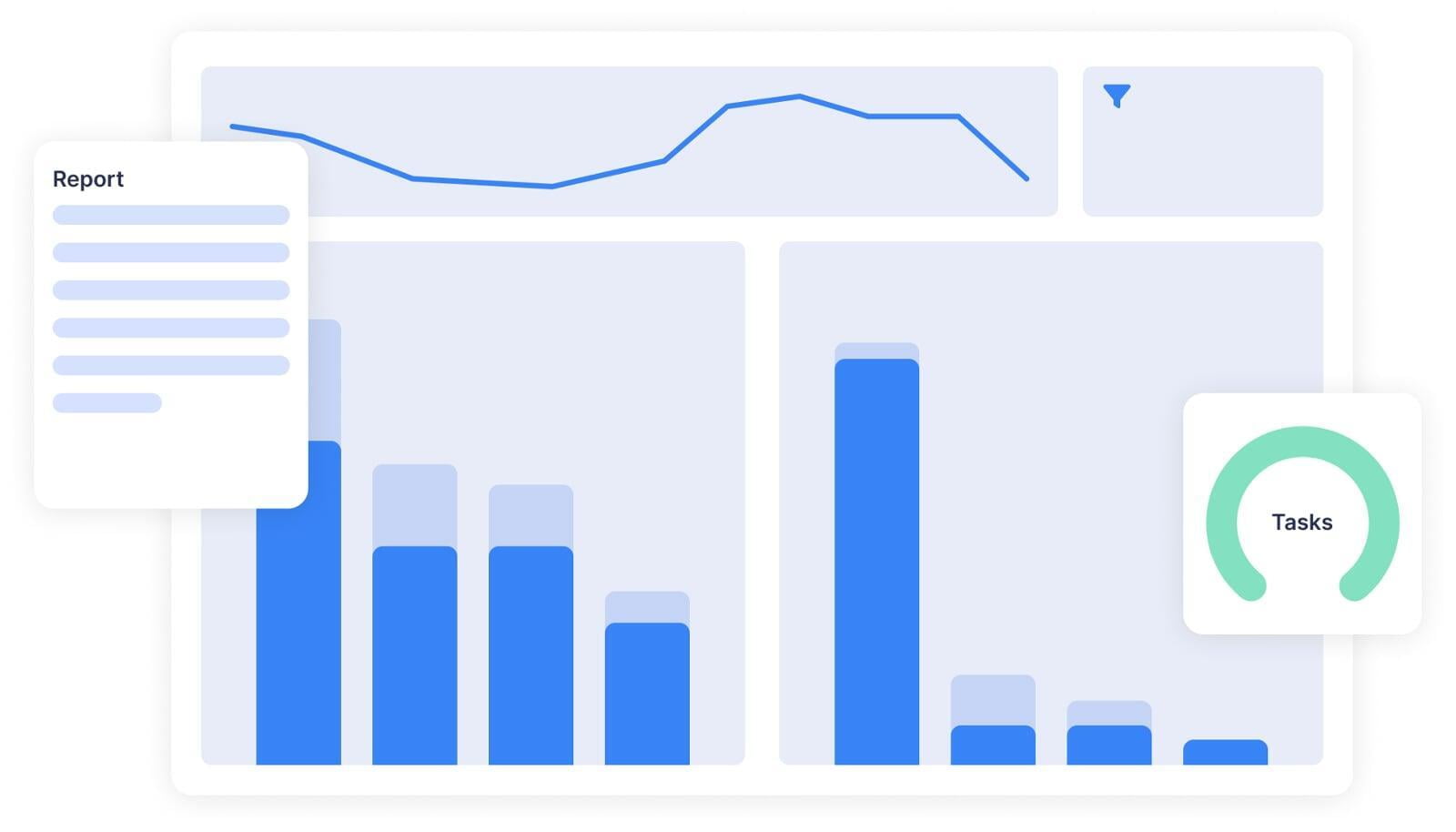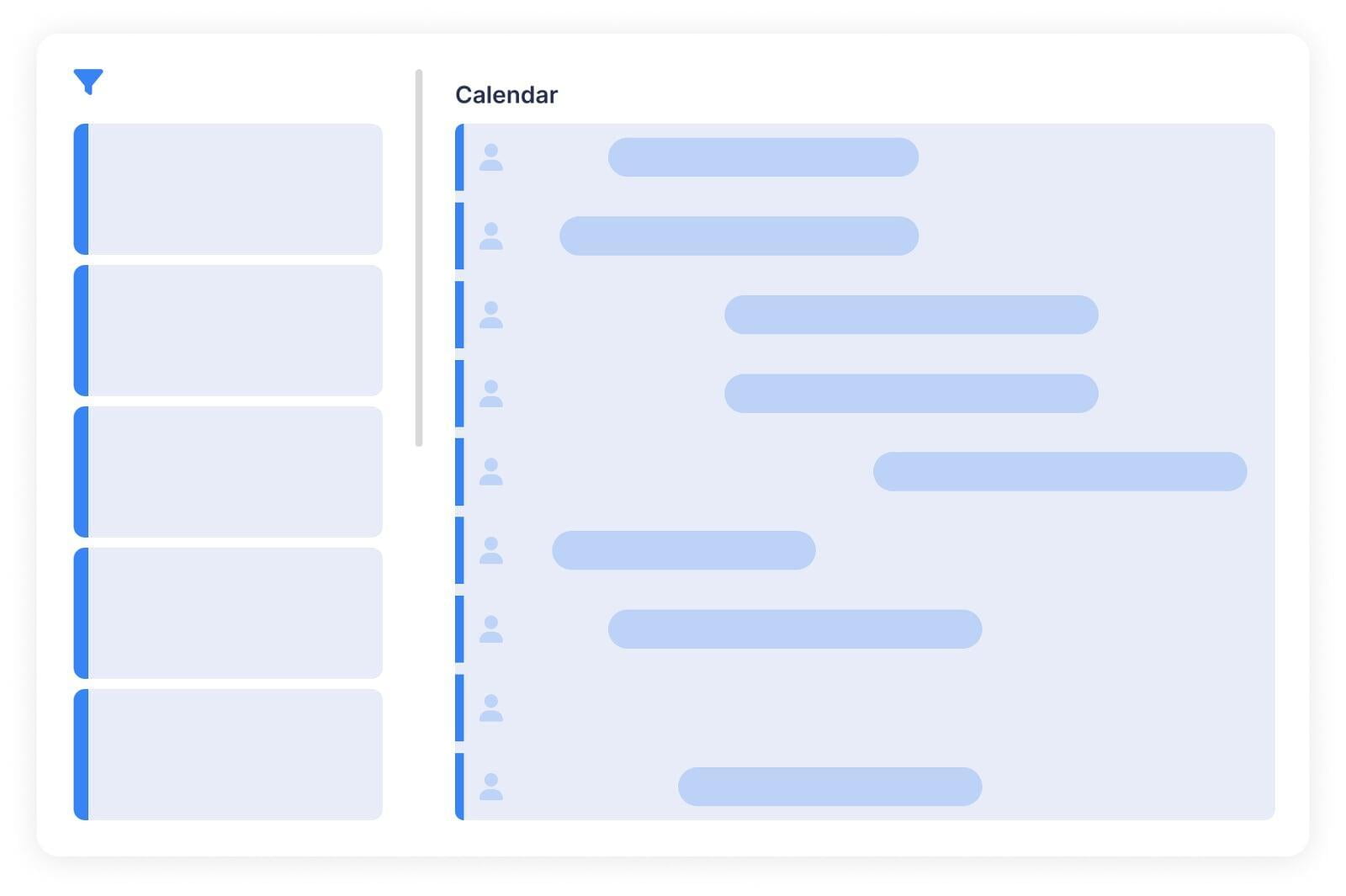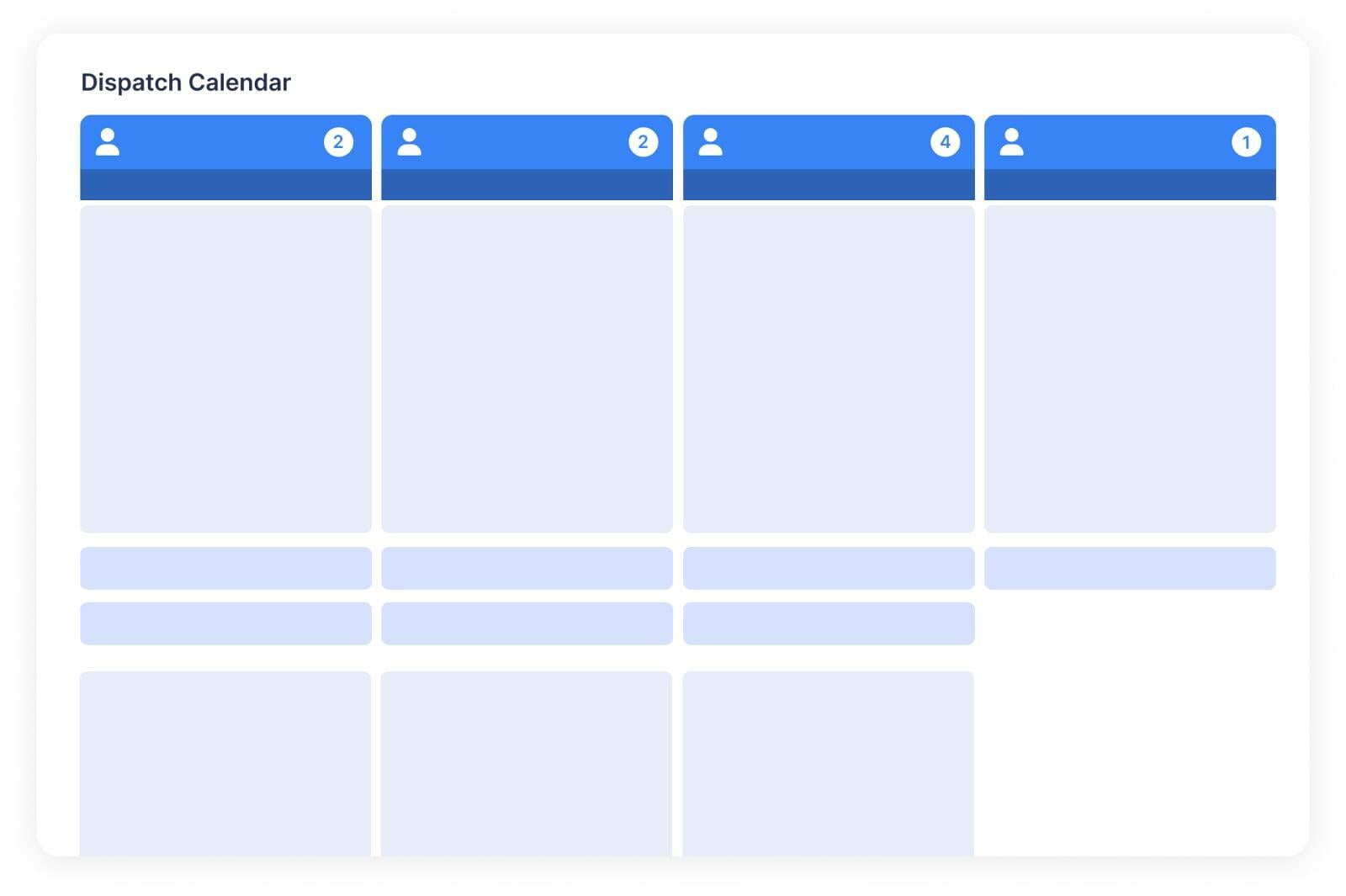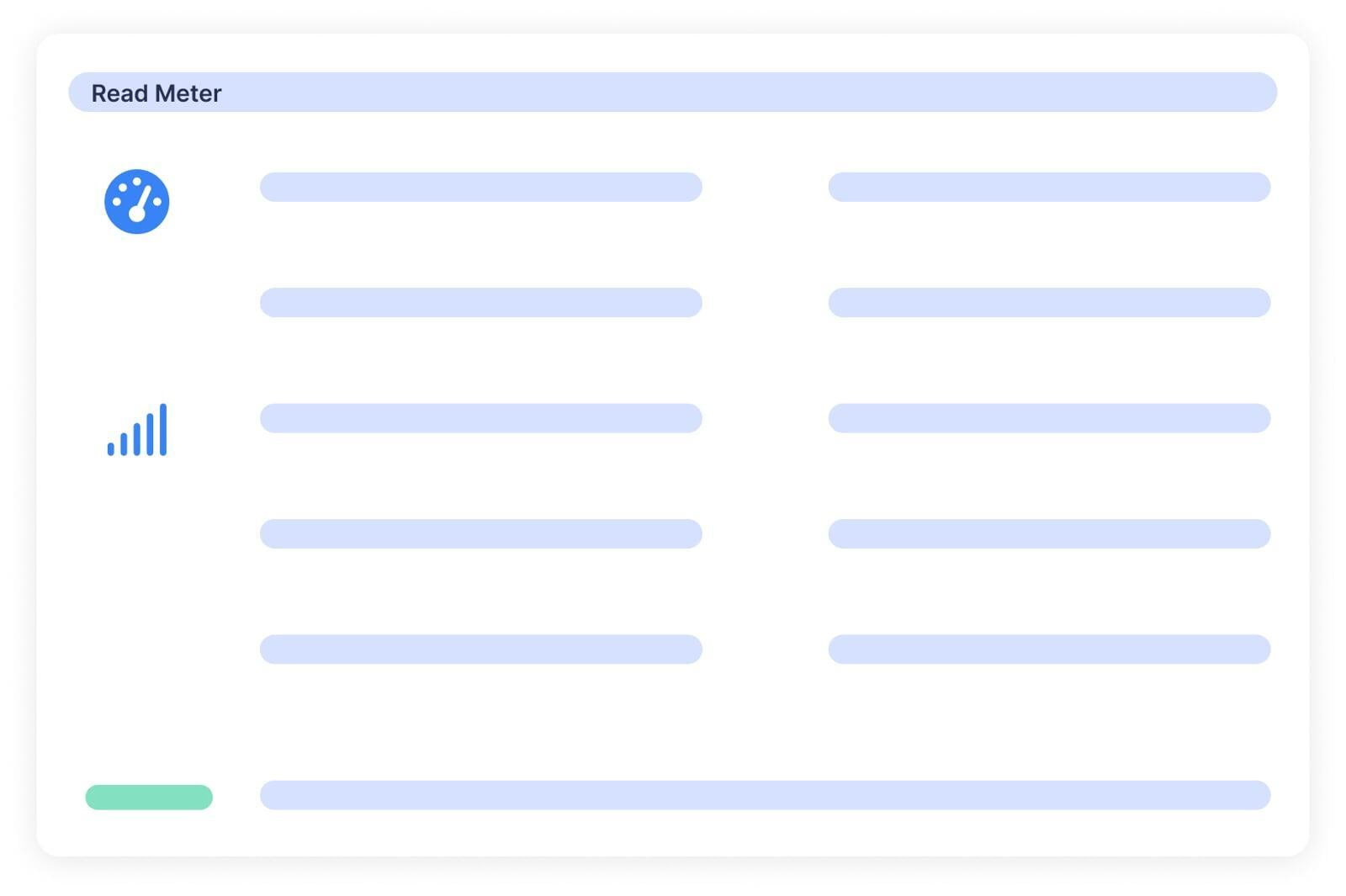What Makes Elements XS Unique?

Direct integration with Esri's modern ArcGIS platform; utilizing the geodatabase as the asset repository for all things spatial. Read More
Get Up and Running Faster Than Ever.
New! Pre-configured templates and a library of pre-built processes means we can have most utilities and local governments up and running with a basic configuration in just a few weeks.
As you grow, take advantage of the most powerful, flexible tools the market has to offer.
Mobile First
A modern, adaptive interface provides an intuitive user experience throughout the entire application using any browser on any device.
Native Apps
Dedicated mobile applications for iOS and Android targeted for specific use cases. Offline work orders, mobile inventory control, and more.
Maps On the Go
Live integration with Esri's ArcGIS platform supported on all devices.
Less Complicated. More Flexible.
Unmatched flexibility provides a simple, under-complicated user experience.
Start with a pre-built solution then tailor the software to meet your individual needs.
Mappy
ArcGIS Integrated
A unique, live ArcGIS integration using the geodatabase as the single, authoritative asset repository for all things spatial. Read More.
Track any type of work on any type of asset.
Manage work history, asset condition information, business risk analysis and much more.
Users can create custom automations using a no-code drag and drop interface to streamline unique business processes. These automations can be used to trigger follow-up events, route work to designated personnel, send notifications, and much more . These user-generated automations can be applied to any scenario or asset and provide an unmatched level of customization throughout Elements XS.
Create Your Own Business
Processes. No Code Required.
Trigger an unlimited number of user-defined events, action, notifications,
and more when user-defined scenarios occur.
Automations Just for You. By You.
The included workflow designers provide no-code and low-code options for users to create
unique automations to solve unique business processes.
Ultra-Flexible, No Custom Code
Elements XS is a commercial off the shelf application that includes building blocks and tools for each client to configure their own unique processes, data collection requirements, interface configuration, and much more.
Users can configure unlimited custom data fields, unlimited custom forms and custom form layouts, and unlimited custom workflow processes - all without modifying application code or requiring custom application development.
Elements XS also includes many options for pre-configured templates and workflows to streamline the onboarding process.
Tailored User Interface
Elements XS provides tools to tailor menus, page layouts, map toolbars, and other interface components to reduce clutter and streamline data collection processes. Each user (or group of users) can have a tailored interface that contains toolbars, buttons, map settings, forms, and other functionality specific to their individual job function.
→ Key Benefits:
Reduce training time for field staff with a streamlined interfaces
Improved user experience with reduced screen clutter
Improved performance with optimized interface per job function
Your Business Processes
Elements XS users can define their own scenarios and tailor the application to streamline individual workflow processes. Common examples of user-defined workflows include:
Multi Asset Automation Via GIS
Select multiple types of assets consisting of multiple feature classes and create Service Orders for all assets at once.
Auto-add labor, materials, and equipment costing data based on feature class data across multiple feature classes at once.
Follow Up Actions
Auto-generate a Service Order Task for the Streets Department to patch the road when the Water Department has completed a mainline repair.
Auto-generate a Service Order to send the Mechanical Rodding Vehicle to a sewer line when an inspection indicates the line should be rodded.
Auto-schedule routine maintenance activities based on data collected during inspections.
Auto-schedule a leak repair follow up once a leak repair has been completed.
Simplified Concepts
Life is complicated. Elements XS is not.
Service Orders
Elements XS utilizes a single document type, called a Service Order, to reduce the learning curve and eliminate confusion regarding which type of document should be created under which scenario. Service Orders in Elements XS combine features from and replace documents known in other applications as Service Requests, Work Orders, Inspections, Work Requests, Maintenance Requests, Preventive Maintenance Records (PMs), and more.
A Service Order in Elements XS tracks the problem, the resolution to the problem, labor, materials, equipment usage and much more. Service Orders also contain unlimited user-defined data collection fields based on the type of work being performed and are used for asset inspections, recurring maintenance activities, preventive maintenance activities and more.
→ Key Benefits:
Eliminate confusion stemming from which type(s) of documents should be created under different scenarios
Reduce training time by simplifying terminology and reducing the number of processes to learn
Improve consistency across users and departments
Preconfigured Templates
Elements XS can be deployed with pre-configured Service Order templates and categories based on the type of organization utilizing the application. Users can then modify these templates to suit their individual needs, reducing configuration time and providing a solid foundation for asset management.
Take your maps and other data offline using our native apps for iOS and Android. When you're back online the click of a button will sync your data and the world will be right again.
Take your maps and other data offline using our native apps for iOS and Android. When you're back online the click of a button will sync your data and the world will be right again.

Unlimited Custom Data Fields
Elements XS allows users to create and utilize as many custom data fields as necessary. These fields can be applied to Service Orders (based on the type of work being performed) or other data collection forms such as permits, licenses, inspections, and more.
Users can perform calculations and analysis on custom fields, define which fields are required, define how the fields are presented to the users (via custom form layouts) and utilize custom fields to trigger follow up actions and events throughout the software.

Unlimited Custom Action Triggers
Unlimited Custom Action Triggers
Set user-defined criteria to trigger user-defined actions and events throughout the application. Unique to Elements XS is the ability for users to create their own unique parameters and conditions to trigger their own unique series of follow up events.
A few common examples of action triggers that can be configured in Elements XS include:
Notify other departments when work has been completed
Auto-generate Service Orders and follow up tasks when user-defined conditions are met
Auto-adjust maintenance schedules based on asset condition and inspection scoring information
Automatically re-assign work to balance the workload based on the type of work, geography, priority, and other conditions
Unlimited Custom Forms
Unlimited Custom Forms
Elements XS contains a dynamic data management technology that allow users to define an unlimited number of custom fields with an unlimited number of custom form layouts to suit the unique needs of specific processes within an organization.
Based on the type of work being performed, users can add as many user-defined fields as they’d like and decide how those fields should be presented to the end user. Elements XS allows full usage of HTML5 controls for picklists, sliders, date selectors, and other user interface tools to streamline data collection methods. System administrators can decide which fields are required and which values on the form may trigger follow up actions or events in other areas of the application.
Users can also generate data collection forms that may not necessarily be related to Service Orders - such as permits, licenses, and inspections. These custom forms are user-generated and can trigger events (such as Service Orders) or notifications when any user-defined criteria or scenario occurs within the application.
→ Key Benefits:
Collect all of the data you need without limitations on number or types of custom fields
Create an unlimited number of custom form layouts to simplify the user interface
Enforce required fields
Reduce the time required to fill out data collection forms
Analyze and perform calculations based on user-defined custom data
Workflow Designer
Users can create custom workflows using a drag and drop interface to automate and streamline processes. These workflows can be used to trigger follow up events, route work to designated personnel, send notifications, and much more. These user-generated custom workflows can be applied to any scenario and provide an unmatched level of customization throughout the application.
→ Key Benefits:Guide users through unique processes based on any event or condition
Generate follow up actions and routine maintenance activities based on data collected in other areas of the software
Automatically notify other departments or users when user-defined scenarios occur
Automate follow up actions and notifications based on any event or condition
Use a drag and drop interface to create custom workflow processes
Workflow Processor
Elements XS includes a workflow processing engine that allows users to analyze data from any combination of third party applications and/or datasets to trigger events within Elements XS based on criteria from these external sources. Common uses of the workflow processor include 811 automation (for one-call locates / tickets), SCADA system integrations (to trigger Service Orders when alarms are issued), and fleet management (trigger vehicle maintenance Service Orders based on fuel consumption or other criteria).
→ Key Benefits:Create Elements XS Service Orders based on information collected in other applications
Easily integrate SCADA, 811, fleet management systems and more
Use information from any third-party application to automatically trigger any Elements XS event
No copying, not synchronizing, just referencing your GIS in it's native format.
No copying, not synchronizing, just referencing your GIS in it's native format.
Elements connects directly with an unlimited number of map and/or feature services that have been published via ESRI’s ArcGIS Enterprise and/or ArcGIS Online. Elements XS interacts directly with published REST endpoints and there are no limits to the number or types of map services that can be utilized, so long as they are supported by the native ESRI platform. Read / write feature access permissions are controlled at the user level and all interaction with map services is real time; the geodatabase is the single, authoritative dataset for all spatial assets and no data is copied or synchronized.
Users can easily integrate query layers to graphically represent any dataset within Elements XS such as locations of work, labor, types of work, job costing details, and more. Setup geofences to define job routing and other workflow processing criteria; heat maps, feature clustering, and map-based reporting also enhance the GIS integration experience.
All map viewers are built on HTML5 technology and will work on any device in any standard web browser. Elements XS also offers a direct integration with Geocortex Essentials by Latitude Geographics, providing the most flexible, best performing web map viewer on the market.
The GIS integration in Elements XS allows users to update feature data directly from Elements XS documents and/or update Elements XS data using GIS feature data to seamlessly share data and provide optimal performance.
→ Key Benefits:
Access live GIS data with a direct, real-time integration to ESRI’s ArcGIS platform
Use your existing GIS without modification
View Service Order and other asset management data on maps in real-time
Update GIS feature data directly from Elements XS documents
Spatially select individual assets or groups of assets to create Service Orders
Asset Management
Asset Condition Assessment
Generate asset condition scores based on maintenance data together with feature class data such as age, material, and other factors affecting the life expectancy of an asset.
Use Elements XS to analyze this data and auto-generate maintenance activity for assets that fall within user-defined condition scoring parameters.
Maintenance Scoring
Use Elements XS to generate a maintenance score each time maintenance is performed on an asset. View maintenance scoring trends over time and auto-generate activity based on maintenance scores.
Quickly find all assets where the latest maintenance score is poor and auto-generate Service Orders for these assets.
Asset Deprecation and Valuation
Elements XS includes reporting tools to assist with GASB and PSAB requirements. Use Elements XS to view which assets are nearing the end of their lifecycle and estimated repair / replacement costs for these assets.
→ Key Benefits:
View current value and replacement cost for any asset or group of assets
Define custom depreciation schedules based on asset type
Spatially locate assets that meet user-defined depreciation or valuation criteria and create batch Service Orders against these assets
Reporting & Analytics
Elements XS includes many pre-built reports to track information common to the majority of Elements XS customers. All reports can be modified to suit the individual needs of an organization using the included reporting tools. Elements XS includes a report designer to generate tabular reports, an analytics designer to generate dashboards, and tools to generate spatial reports that are seamlessly integrated with your GIS. Elements XS also utilizes an open Microsoft SQL database so any other reporting engine can also be used if desired.
All reports can also be exported to Excel, PDF, HTML, Text, CSV, Rtf, and image.
Report Designer
The Elements XS Report Designer is a client side tool included with every Elements XS deployment that allows users to connect to the Elements XS SQL database to modify existing report templates or generate new reports. The drag and drop interface provides industry standard reporting functionality as well as tools for charts, graphs, and more.
Analytics Designer
The Analytics Designer is also a client side tool included with every Elements XS deployment. This designer allows users to create dashboards based on any data collected in Elements XS. Pre-built dashboards can be modified to suit specific needs of an organization or users can create new dashboards based on pre-built SQL views designed to provide quick access to the most commonly used data in Elements XS.
→ Key Benefits:
Create tabular reports, dashboards, and map based reports
Use pre-built reports to quickly access common reports
Modify exiting report templates or build new reports using the included designers
All reports are integrated with the Analytics Workspace to provide administrators quick access to live reporting data
GIS Based Reporting
A picture is worth a thousand words - use your GIS to display areas with high concentrations of labor, work, or other user-defined criteria. Access labor, equipment, and materials usage and analyze asset conditions from the map. Spatially view data from any report or dashboard in Elements XS.
Scheduling & Dispatching
Use the maps, or don't. Whichever is quickest and easiest for you.
The Dispatch Workspace in Elements XS is a unique interface designed to illustrate which tasks are currently assigned to which users and help dispatchers balance the workload.
Users can quickly reassign work and ensure high priority tasks are being addressed.
Resource Management
The integrated resource management calendar in Elements XS illustrates time slots scheduled for employees and resources such as equipment.
This interface provides quick access for employee and resource scheduling to optimize field operations.
Calendars
The integrated calendars in Elements XS display Service Order information as well as user-defined documents such as permits, licenses, inspections, and more; simply click on an event to open the related record and view additional information.
Inventory Management
Manage materials, stock levels, and equipment across multiple warehouses and storage locations.
Material Storage Locations
Create a storage hierarchy with unlimited tiers to track where individual inventory items are stored - for example, a part may be at Warehouse A → Level 1 → Isle 1a → Shelf 3 → Bin 1. User permissions determine which users can access materials from specific inventory locations in order to ensure users aren’t consuming materials they don’t have.
Stock Level Management
Set low stock alerts and track material stock levels at multiple locations for each inventory item.
Vendor Management
Elements XS includes tools to track vendors and associated contacts for each vendor. Multiple vendor part numbers can be tracked for each inventory item to help track which vendors historically provide the best prices for individual inventory items.
Materials Pricing
When consumed on a Service Order Task, each inventory item in Elements XS can be set to reference a fixed sell price, weighted average, most recent price paid, or most recent price paid plus a defined markup percentage.
Purchasing & Receiving
Create Purchase Orders and Item Receipts to track which parts have been ordered and which parts have not yet been received. When parts are received, stock levels are automatically adjusted and as materials are consumed on Service Order Tasks the stock levels for these materials is adjusted accordingly.
Use the Purchase Orders to order services from vendors and contractors and track which services have been paid for.
Create Purchase Orders and Item Receipts to track which parts have been ordered and which parts have not yet been received. When parts are received, stock levels are automatically adjusted and as materials are consumed on Service Order Tasks the stock levels for these materials is adjusted accordingly.
Use the Purchase Orders to order services from vendors and contractors and track which services have been paid for.
Purchase Orders
A Purchase Order indicates that inventory parts have been ordered. Key information collected on a Purchase Order includes the date the order was placed, who placed the order, which parts were ordered, how many of each part were ordered, the vendor from whom the parts were ordered, vendor contact information, expected delivery date, and the inventory location to which the parts should be shipped.
Purchase Orders remain Open until all parts on the order have been received using an Item Receipt; this provides a system of checks and balances to ensure all orders are accurately fulfilled and prevents vendors from sending (and billing for) too many or too few parts. Elements XS also provides the ability to associate multiple Item Receipts with a single Purchase Order to properly manage partial shipments.
Vendor Bills
Vendor Bills are used to determine how much money is paid for inventory parts that have been received. After inventory parts have been received using an Item Receipt, a Vendor Bill is created. Information on the Vendor Bill includes the vendor invoice number and the prices paid for each inventory item that was received into inventory.
Once a Vendor Bill has been associated with an Item Receipt, the inventory receiving process has been fulfilled.
Item Receipts
Set Item Receipts increase stock levels and are created when shipments are received. When inventory items are received at a warehouse using an Item Receipt, the quantity of the specified inventory items on hand at an inventory location are increased by the quantities indicated on the Item Receipt.
Key information tracked on an Item Receipt includes the date the parts were received, who received the parts, the location where the parts were received, delivery method, a list of the parts that were received, and the quantity of each part that was received.
Item Receipts remain “Open” until a Vendor Bill or Invoice has been input for the parts received. User permissions in Elements XS determine who can create, modify, and delete Item Receipts. stock alerts and track material stock levels at multiple locations for each inventory item.
Invoices
Invoices are generated to reduce inventory stock levels and track the cost of inventory parts going out, using whichever inventory valuation method is preferred (FIFO, LIFO, Weighted Average). Key information tracked on an Invoice includes the date the inventory parts where used, the quantities of inventory parts used, how the parts were used, and the price paid for each of the parts that were used.
Invoices are automatically generated whenever inventory parts are used on a Service Order. Invoices can also be manually generated to reduce stock levels when items are depleted from inventory without using Service Orders.
Plays well with others.
We understand that portability of data is critical, so we do our best to help.
Utility Billing Integration
Elements XS includes tools for a live connection to multiple utility billing applications to provide location, customer, meter, and service data to field technicians in realtime directly from the utility billing application. Tools to update the utility billing software directly from Elements XS are also available to avoid duplicate entries. Utility billing data can be visualized in the GIS to show consumption data, usage history, and other field-critical data.
→ Key Benefits:
Analyze usage and consumption data using GIS then create Service Orders based on utility billing data
Optimize shut off / disconnect routes, meter reads, and more
Perform meter change outs, reads, installations, and more in Elements XS and post the transactions directly to the utility billing application to eliminate double entry
Access up-to-date customer, location, meter, and service information directly from the utility billing application
SCADA Integration
Use the included workflow processor in Elements XS to seamlessly integrate with your SCADA system.
When the SCADA system sends an alarm, the alarm is picked up by the Elements XS workflow processor and a Service Order (or other appropriate record type) is auto-generated in Elements XS and associated to the correct asset(s). Users are notified of the new Service Order and the transaction between the SCADA alarm and Elements XS is seamless.
CCTV / Inspection Videos
Elements XS includes tools to view and interact with CCTV videos without any custom configuration or application development.
Open a sewer line and quickly view data from third party video inspection software. Use the Elements XS workflow processor to analyze data from video inspection software to auto-generate Service Orders and maintenance activity based on events in the video inspection application.
Fleet Integrations
Use Elements XS to view and analyze data from third party fleet management software including snow plow routes, vehicle location data, and auxiliary data including when a plow blade was up / down and how much sand / salt was utilized throughout a storm event.
Using the Elements XS workflow processor, follow up events and can be auto-generated based on the data collected in third party fleet management applications.
One Call Tickets / 811 Integration
Dig safe. Bluestakes. Mark out. One call. 811. Every state calls it something different - regardless of terminology, when a new ticket is received Elements XS can process the ticket, show the geography of where the mark out is required, auto-generate and auto-assign a Service Order to mark the ticket.
The ticket is displayed on a mobile device where field staff can click on the ticket on the map, take one or more pictures, make notes about how the line was marked, and close out the Service Order.
For states requiring a positive response, Elements XS can push data back up the chain and submit a response to the one call center that the ticket has been marked.
Ready to Check it Out?
Schedule a quick chat with our team to learn how Elements XS can help your organization.





